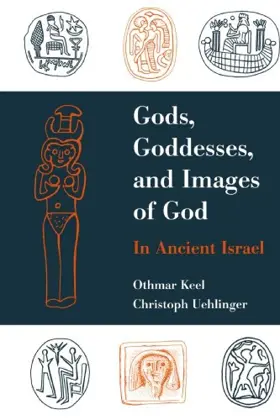

Gods, Goddesses, and Images of God
Pages
484
Publisher
Augsburg Fortress Press
Published
11/1/1998
ISBN-13
9780800627898
How were male and female deities understood in ancient Canaan and Israel? How was the Yahweh cult affected by religious and political features of Egypt, Assyria, and Canaan? Justifying the use of symbols and visual remains to investigate ancient religion, the authors reconstruct the emergence and development of the Yahweh cult in relation to its immediate neighbors and competitors.
Reviews
The most important survey of the archaeological data, and especially the iconography, related to Israelite religion.
[Full Review]
Minneapolis: Fortress Press, 1998. Pp. x + 465, Cloth, No Price Available, ISBN 080062789X. Raz Kletter Israel Antiquities Authority and the University of Haifa Haifa, Israel The book appeared first in German in 1992. It opens with a short introduction (chaps. I-II), followed by discussion according to periods, from MB II B to the Iron Age III (1800-450 BC). Most of the space is devoted to the Iron Age II (pp. 133-372). Summary and conclusions (chap. X) are followed by useful indexes and a rich bibliography. The text is accompanied by many drawings; those who intend to study the material further should seek originals, since line drawings are already an interpretation. The authors state that their aim is to supplement "conventional text oriented approaches" with iconographic sources (p. ix), not to offer a synthesis of the history of Syro-Palestinian religions. This contradicts the rest of the book, where the emphasis is put on reconstruction of religious history (pp. 1, 3-4, 210, 248, 394, 396), and the authors' definition of the work as "religio- historical study" (pp. 372, 374). The basic questions (pp. 1-4) are not about iconography and archaeology, but about Biblical theology: "Was preexilic Israel polytheistic? Did Yahweh have a consort?" A brief review cannot portray all the issues treated in the book. In the MB IIB period (1800-1550 BC), the 'constellations' of the weather god and his consort, the naked Goddess, appear rather complete (the Goddess is related to lions, caprids, trees, branches, doves, etc.). The divine pair appears equal in status. The LB Age (1550-1200 BC; chap. IV), under an Egyptian control, forms a sharp break: male warrior deities become dominant in the official religion. There are no pairs of deities and the female Goddess is suppressed; her representations are limited to inexpensive images (mainly "plaque figurines"), related with house- or private- cult.
[Full Review]

